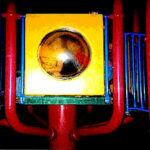“Johnny, stop hitting your brother.”
“Johnny, don’t throw the toys!”
“Johnny, put your dirty socks in the laundry.”
Sigh… I can’t stand any more of this bad behavior!
Does this sound like you?
All parents struggle and get stressed out because of their children’s behavior at times. They give time outs and punish, they give stern lectures and yell… and the behavior doesn’t always get better.
In the great behavioral studies done in years past, two distinct methods of changing behavior were used: negative reinforcement and positive reinforcement. Negative reinforcement means that, when an unwanted behavior occurred, something bad would happen. The rabbit that nibbles the apple gets an electric shock. The child steals a toy from his sister is sent to his room.
Positive reinforcement means that when a desired behavior occurs, something good happens. The rabbit that chooses the carrot gets two carrots instead. The child who shares a toy with his sister gets praise and appreciation.
In studies, and in personal experience, positive reinforcement works much better at changing behaviors in children than negative reinforcement. With negative reinforcement, a child simply learns not to do that specific action again. He does not learn what to do, or how to act.
There is a common phrase in parenting websites and magazines: “Catch your child being good.” If you see your child exhibiting a behavior that you would like them to do again: share with a sibling, use good manners at the table, do their homework without whining, praise them, and offer a rewards system.
A rewards system can consist of a behavior chart, or token box. Each time a child exhibits good behavior, they will earn a sticker on the chart or a token in the box. Come up with a system by which so many stickers or tokens equal a small prize or special privilege.
Perhaps the most important reason to use positive reinforcement is to reduce overall stress in the family. A parent who is focused on seeing the good in a child, and praising them for it, will have a happier frame of mind, and will not have to resort to yelling, threats, or punishments. The child, in turn, will not be fearful of a parental outburst.
The child’s self-esteem is also bolstered with positive reinforcement. If they are constantly told not to do something, say something, or act in a certain way, they may begin to realize that they cannot please their parent, or that they themselves, instead of the actions, are bad. Speaking enthusiastically about your child’s positive behavior choices will make them feel good about themselves and you. Positive reinforcement makes them more eager to repeat the good behavior so they can f



